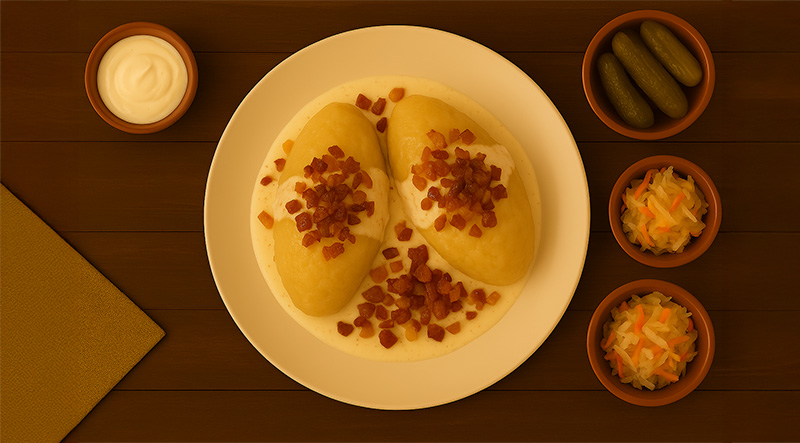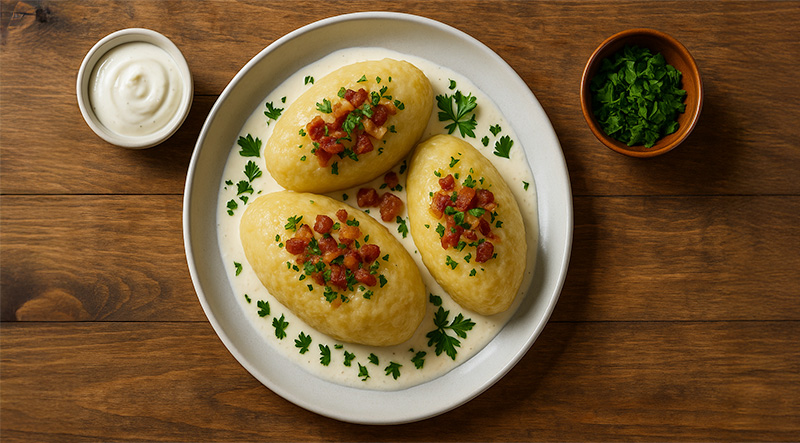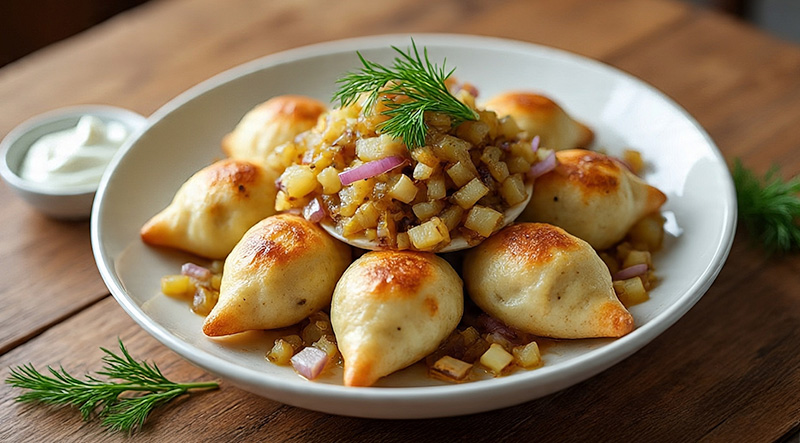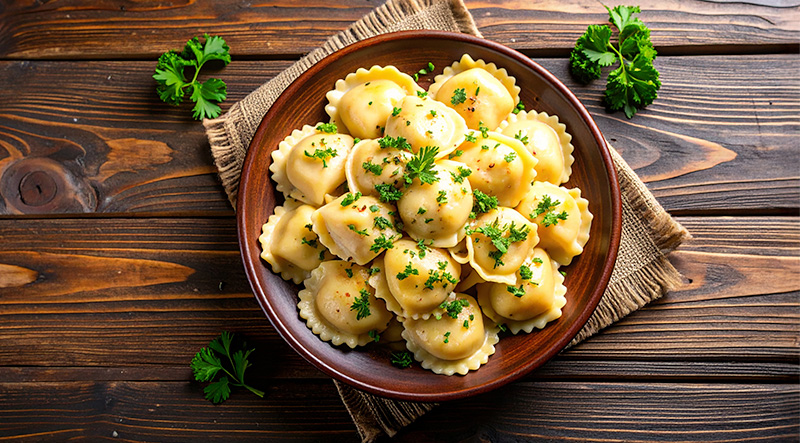Cepelinai, Lithuania's ultimate comfort food with altitude, has a flavor that soars and a name inspired by zeppelins. Usually filled with seasoned pork, these plump potato dumplings are then covered in crispy bacon bits and a creamy sour cream. Cepelinai is the type of dish that envelops you in a warm, delectable embrace and refuses to let go. It is hearty, cozy, and designed for Baltic winters. Every bite of this dish is a Lithuanian legend, not just a meal. Read More...
The History of Lithuania’s National Dish – Cepelinai (Lithuanian Potato Dumplings):
Deeply rooted in Lithuania’s culinary traditions and national pride, Cepelinai — the iconic potato dumplings shaped like zeppelins — have become more than just a meal; they are a cultural institution. Known for their hearty size and comforting richness, Cepelinai reflect the agricultural backbone of the country, as well as its enduring connection to family, tradition, and identity.
Humble Origins in a Potato-Based Cuisine:
Lithuania, like many Eastern European nations, adopted the potato as a staple ingredient in the 18th century. The versatility and resilience of the potato made it a lifeline for rural families, especially in the cold, long winters. Over time, Lithuanians began creating various potato-based dishes, but Cepelinai stood out for its innovation: combining grated raw potatoes and mashed cooked potatoes into a sticky dough capable of holding a savory filling.
This labor-intensive process likely evolved from older dumpling recipes, merging peasant ingenuity with the availability of pork and dairy — two key elements of the Lithuanian diet. The name “Cepelinai” came later, inspired by the shape of German Zeppelins, the massive airships that rose to fame in the early 20th century. The resemblance was too strong to ignore, and the dish gained its new, now-iconic name.
A Dish of Family and Festivals:
Traditionally filled with ground pork, beef, or a curd cheese mixture, Cepelinai are often served with a rich sauce made from sour cream and fried bacon or onions. Due to their size and complexity, Cepelinai are typically prepared for weekend family meals, holiday celebrations, and cultural festivals — moments when time and patience are abundant.
In rural households, making Cepelinai is often a multi-generational affair. Grandparents, parents, and children gather in the kitchen, each taking a role — grating potatoes, shaping dumplings, or preparing the toppings. The dish is more than nourishment; it is a shared ritual, passed down with pride.
Symbol of Lithuanian Identity:
Following Lithuania’s independence from the Soviet Union in 1990, there was a resurgence of national pride, and Cepelinai emerged as a culinary symbol of Lithuanian heritage. Restaurants across the country began showcasing the dish more prominently, and it even gained international attention as travelers sought out authentic local experiences.
In 2014, Lithuania celebrated its first Cepelinai Day, further cementing its status as a cultural treasure. Variations of the dish have emerged, including vegetarian and modern takes with gourmet sauces, but the essence remains the same — warm, filling, and unmistakably Lithuanian.
From Kitchen to National Icon:
Today, Cepelinai represents the heart of Lithuanian cuisine: resourceful, comforting, and deeply communal. It carries with it the stories of the countryside, the strength of tradition, and the flavor of a nation that proudly embraces its roots. Whether served in a small village home or a fine dining restaurant in Vilnius, Cepelinai continues to connect Lithuanians to their past — one hearty bite at a time.
Make the Meat Filling:
Prepare the Potato Dough:

Assemble the Cepelinai:

Cook the Dumplings:

Make the Sauce:

Serve:
The total preparation and cooking time for Cepelinai is approximately 1 hour and 10 minutes. Preparing the ingredients — including grating and draining the raw potatoes, mashing the boiled potatoes, and mixing the dough — takes about 30–35 minutes. While the dough rests briefly, the meat filling and sauce can be prepared in parallel. Shaping the dumplings requires another 10–15 minutes, depending on experience. Boiling the assembled dumplings takes about 25–30 minutes, and the sour cream–bacon sauce can be cooked in that same time frame. With efficient multitasking, the entire dish can be ready in just over an hour.
A single serving of Cepelinai, consisting of approximately two medium dumplings with meat filling and sour cream-bacon sauce, contains around 600–750 calories. The potato dough, made from both raw and boiled potatoes, contributes about 250–300 calories, while the ground meat filling adds roughly 150–200 calories depending on the fat content. The rich sour cream and bacon sauce can add another 200–250 calories, mainly from fats. Additional toppings like fried onions or extra sour cream can raise the calorie count slightly. Overall, Cepelinai is a hearty, energy-dense dish traditionally enjoyed as a satisfying main meal.



